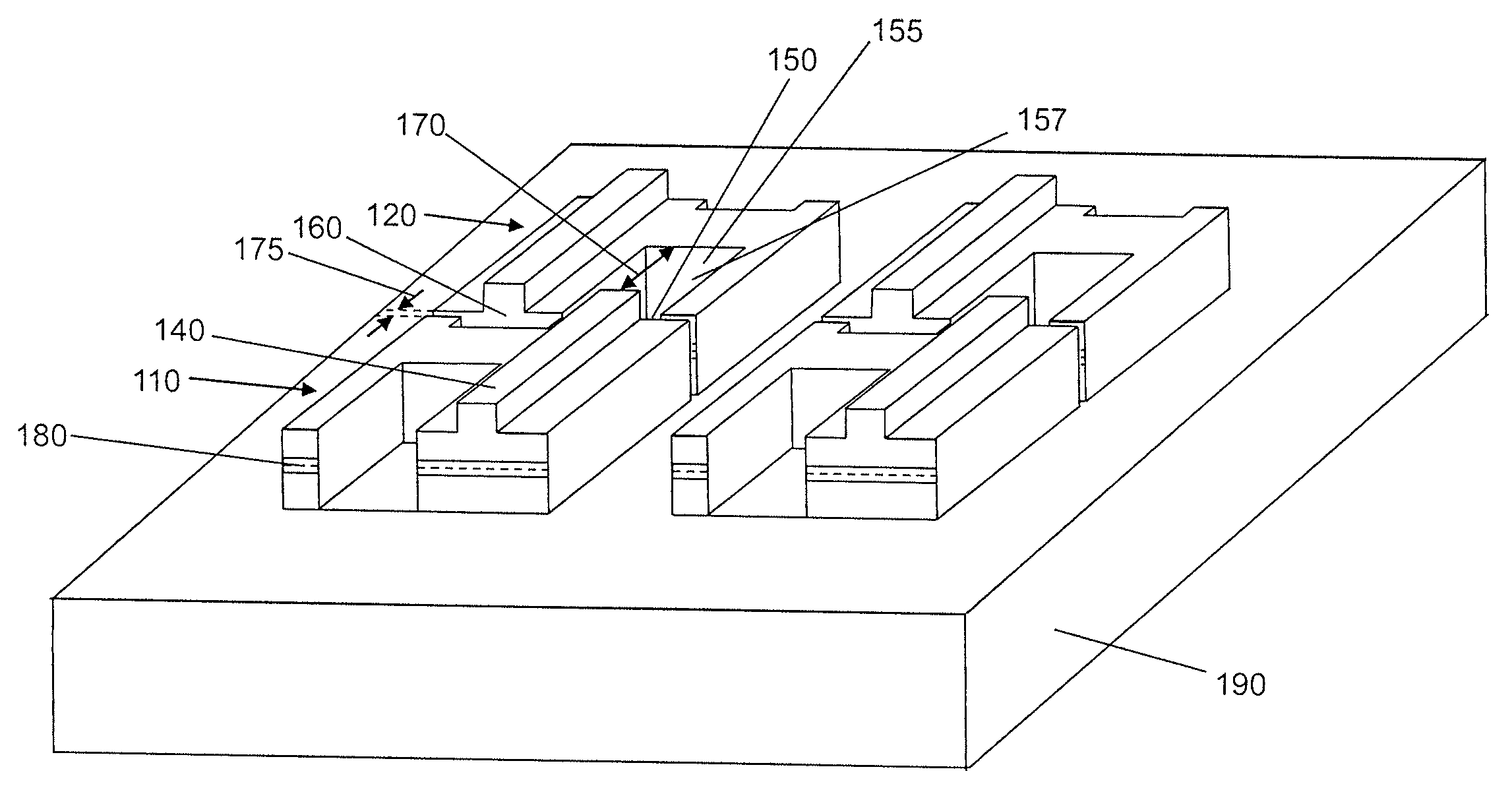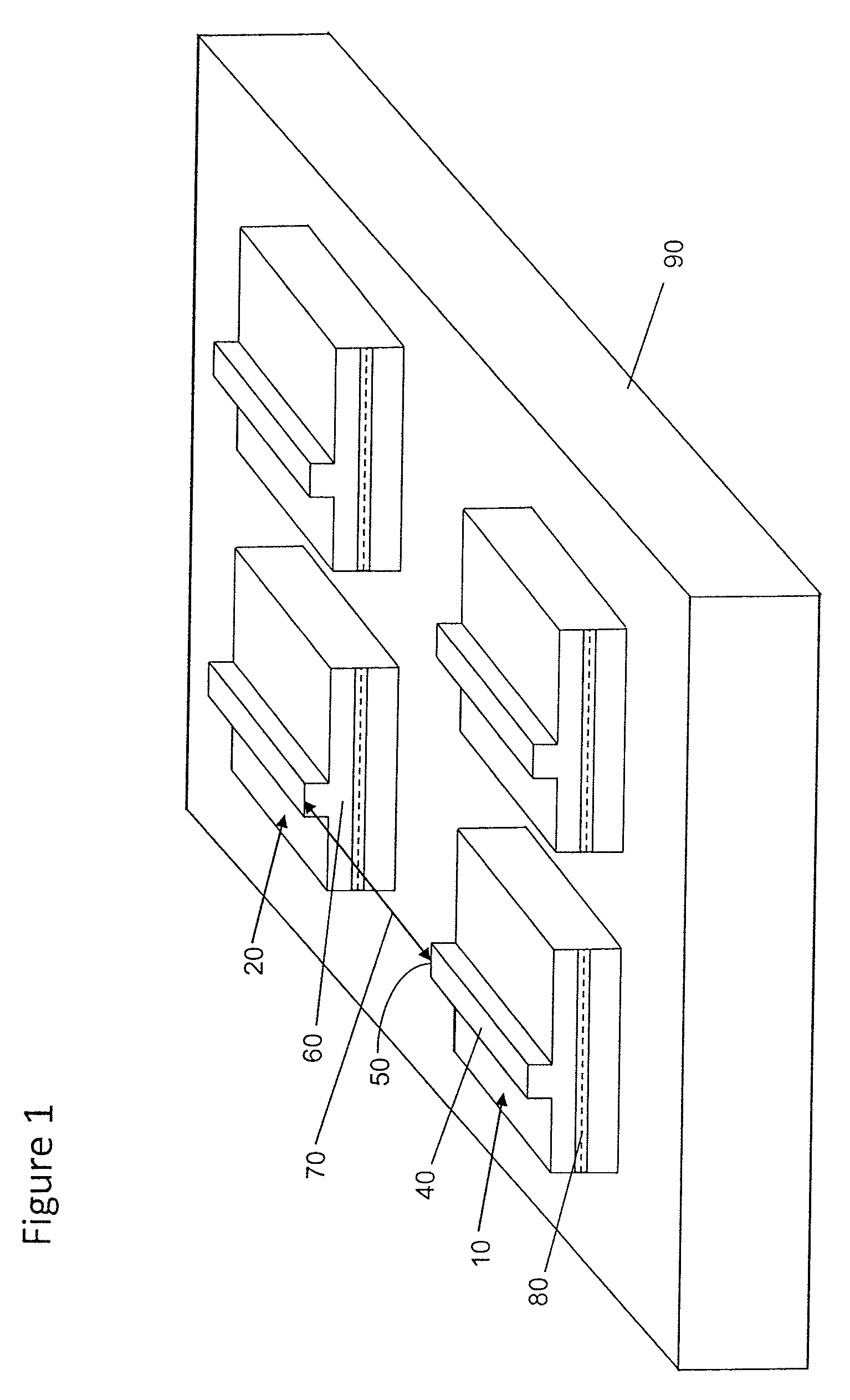Edge-emitting etched-facet lasers
a technology of etched facets and laser chips, which is applied in the direction of semiconductor laser structure details, semiconductor lasers, individual semiconductor device testing, etc., can solve the problems of significantly reducing the number of useful laser chips that can be produced from a given wafer, and conventional lithographical techniques cannot be readily used to further process lasers. , to achieve the effect of minimising wasted spa
- Summary
- Abstract
- Description
- Claims
- Application Information
AI Technical Summary
Benefits of technology
Problems solved by technology
Method used
Image
Examples
Embodiment Construction
[0040]FIG. 1 shows a perspective view of a substrate 90 with an epitaxially deposited waveguide structure including an active region 80 in which etched-facet lasers including a ridge 40 are fabricated. The etched-facet ridge laser mesas 10 and 20 are positioned on the substrate so that the front facet 50 of laser corresponding to mesa 10 is at a distance 70 from the back facet of laser corresponding to mesa 20.
[0041]FIG. 2 shows a top plan view of two adjacent etched-facet ridge lasers, similar to those in FIG. 1. A wire-bond pad 30 is provided to allow wire-bonding to the pad and for electric current to be directed to the ridge allowing the laser to operate. The laser mesas 10 and 20 are positioned on chip 15 and 25, respectively. The chips 15 and 25 are formed through a singulation process along the lines that define the boundary of the chips in FIG. 2.
[0042]The substrate 90 may be formed, for example, of a type III-V compound, or an alloy thereof, which may be suitably doped. The...
PUM
 Login to View More
Login to View More Abstract
Description
Claims
Application Information
 Login to View More
Login to View More - R&D
- Intellectual Property
- Life Sciences
- Materials
- Tech Scout
- Unparalleled Data Quality
- Higher Quality Content
- 60% Fewer Hallucinations
Browse by: Latest US Patents, China's latest patents, Technical Efficacy Thesaurus, Application Domain, Technology Topic, Popular Technical Reports.
© 2025 PatSnap. All rights reserved.Legal|Privacy policy|Modern Slavery Act Transparency Statement|Sitemap|About US| Contact US: help@patsnap.com



